Project Grayburn is a litmus test for how the British Army balances combat effectiveness with sovereign industrial capability.
With over 170,000 rifles, optics, support equipment, and a 30-plus-year support horizon on the table, it is arguably the Army’s most strategically significant small-arms procurement since the SA80 entered service.
BDT UK, the British arm of Beretta Holding Group, is one of several contenders in the running, alongside Heckler & Koch, SIG Sauer, Knight’s Armament, and others. But its bid is distinctive. It offers not only two mature rifle platforms and a NATO-standard optics suite, but also a concrete, phased plan to stand up a full-spectrum manufacturing capability in the UK.
As part of that vision, BDT has proposed establishing what it calls a “Small Arms Hub” at its existing 405-hectare Skydock test facility in Lincolnshire. The site, already partially leased by BDT’s subsidiary Centanex, includes a 210-metre underground ballistic range originally built to test aircraft armaments during the Second World War.
Senior representatives from BDT, Sako and Steiner Optics, outlined the proposal at an event in North London on 17 July.
The company confirmed that an agreement is already in place with the landowner to allow for expansion should its bid be selected. A new production hall of over 2,500 square metres is planned and, if built, would support skilled employment in the local area. A BDT spokesperson indicated that if a formal agreement with the Ministry of Defence were secured by 2030, deliveries of the full requirement – estimated at around 170,000 rifles – would conclude by 2042.
BDT’s proposal to the MoD includes four tiers of UK content: 5%, 20%, 80%, and 100%. The 20% model would include domestic production of key receiver components and local assembly and testing. The 80% configuration would bring almost all manufacturing onshore, except for barrels. At 100%, full UK-based production would include cold-hammer-forged barrels.
Jack Cadman, Law Enforcement and Military Group Manager at BDT UK, told me and other journalists, “There’s a spectrum of what can be done. These aren’t discrete options — 5%, 20%, 80%, or 100% UK-made. What we’re saying is: here’s what that could look like tactically. At 5%, all the components are manufactured at home sites — Beretta in Italy, Sako in Finland, Steiner in Germany — but assembly, testing, and evaluation take place in the UK. That’s not our preference. Assembly factories are out of fashion — and rightly so.
But as a first step, given the timelines, it might be necessary. 20% means UK partners would make the upper and lower receiver and forend. At 80%, only the barrel is made overseas. Now the barrel is the key point — and I think UK budgets are coming around to this — producing the barrel in the UK is the critical component in a time of need. We’re in a fortunate position — we’re not a distributor or a partial assembler. Because of the companies Beretta has acquired, we can offer a complete system. We’ve had discussions about laser modules, bayonets, grenade launchers — we can provide all of them. But it comes down to money, timelines, and the demand signal from the UK. Project Grayburn is the crocodile closest to the canoe, but we’re also thinking ahead.”
The consortium laid out its case at a combined media briefing and live-fire demonstration, attended by UK Defence Journal. The event featured technical walk-throughs of both rifle systems, hands-on testing with Steiner optics, and an industrial strategy presentation that was as detailed as it was blunt. The message was consistent: the weapons are proven, the production model has been validated overseas, and the UK could build them here, if it moves now, said Cadman.
“We’ve broken it down into four phases. So essentially, contract is awarded on January 1st — let’s say 2027, that’s just an arbitrary figure I pulled from the sky. In that first year, we’re doing technology transfer and initial delivery — getting the factory site in the UK, doing the prerequisite work. That’s what we call complete knockdown, or CKD assembly — your 5% UK-made.
The weapon gets delivered to the UK completely apart, we put it together over here, and then we test and evaluate. The reason that’s important is because we are training people from scratch to build weapons in the UK — they need to go through the process. Phase three, months 24 to 72, is where the equipment setup happens — CAD machines, cold hammer forging — and by Month 72 we need a full UK domestic production.”
On localisation, Beretta’s model, and UK testing capacity, Cadman was very clear.
“From a localisation perspective, our history is essentially the blueprint for us. From a BDT UK perspective, it was the M9 contract in the US — that’s where Beretta USA built a factory and provided the service pistol to the US military for over two decades. More recently, we’ve had the Sako contracts. We’ve expanded the portfolio significantly — from precision rifles to going back to self-loading rifles for Finnish and Swedish defence. And then in Qatar, we did a joint venture with Barzan Holdings — that’s the Qatari Government’s procurement company.
We created a company called Bindig, providing rifles and pistols to the Qatari forces. The similarities to the UK are striking. We already have a production facility in St Neots — they produce distraction devices, not rifles, but that would be the basis for our domestic production facility. The bottleneck isn’t production — it’s testing and evaluation. That site has a 200-metre and 150-metre indoor range used during World War Two to test RAF ammunition. We’re in a very forward position there, and we’ve already made plans around how the facility would look.”
Attendees were invited to fire both rifles. As someone with no live-fire experience, as you can see clearly in the image above, I found the weapons remarkably easy to handle. Recoil was light, the controls intuitive, and hits were immediate. “There’s next to no recoil,” one instructor said as he handed over a magazine. “You’ll be hitting everything.”
The two offerings cover a broad operational spectrum. First, the Beretta NARP (New Assault Rifle Platform), chambered in 5.56×45mm NATO, is a piston-driven, AR-style rifle developed for the Italian Army. “Externally, it’s an AR-15,” said Marco, Beretta’s international sales lead. “But internally, everything is new. We use a short-stroke gas piston, no buffer tube, and it’s fully ambidextrous. That means folding or adjustable stocks, depending on the mission.”
Second, the Sako M23 family, based on the AK24 programme currently being delivered to Sweden and Finland. Sako representative Cameron described the platform as modular, suppressor-ready, and built for cold-weather reliability. “We’ve got multiple barrel lengths: 11.5-inch CQB, 14.5-inch general-purpose, 16-inch infantry, and a 7.62 designated marksman rifle,” he explained. “The Swedes are already getting these – we’re producing today.”
Steiner provided the optics: the M8Xi 1–8× low-power variable optic (LPVO) and the T1Xi red dot sight. “These are fielded with NATO units already,” said a representative from Steiner. “The M8Xi gives you a dual-focal plane setup – a mil-spec DMR reticle in the first plane, and a red dot CQB reticle in the second. You get both long-range precision and fast acquisition in one optic.”
Beretta Holding has a track record in export industrialisation. In Qatar, it entered a joint venture with Barzan Holdings (Bindig) to produce the ARX160 under license. In the US, Beretta built an entire plant in Maryland to deliver over 600,000 M9 pistols to the US military.
“In Qatar, we entered a joint venture with Barzan Holdings. We brought in machinery, trained a workforce, and delivered rifles from a greenfield site. It’s not a hypothetical we’ve done it before. Nobody is going to do this speculatively. But we have a site, we have a plan, and we’re ready to move the moment the green light is given.”
The Sako M23 has already been selected by Finland and Sweden as a joint-service rifle platform in 5.56 and 7.62. These NATO-standard calibres are available off the shelf, but Beretta and Sako say they are prepared to develop new variants should the MoD choose to shift to 6.8 mm or other emerging rounds.
The BDT offering goes beyond the rifles themselves. Steiner provides both day optics and electro-optics, with future upgrades likely to include laser aiming devices and digital sights via its U.S. sister company, Steiner e-Optics
The event ended with a sense of cautious momentum. The consortium is ready. The rifles are mature. The optics are fielded. The facility is identified. But investment depends on clarity from government.
“At the very heart of it, we want to deliver a new individual weapon system that meets the needs of soldiers — not just now, but into the future. We know we’ll probably face a calibre change at some point, and we’re preparing for that. We’ve already developed a 6.5 Grendel survival platform, and we’ve got 7.62 for the Sako weapon system. What we don’t want is another situation like Bowman — where private-sector technology moves faster than the contract and the UK ends up with something obsolete. So we’ve planned for that. We’re building an organic production activity that doesn’t rely solely on UK-funded contracts. We want to export.
We want to be able to feed the beast — self-sustain, and let the UK tap into that when needed. It’s not just final-phase manufacturing either — it’s supply chain resilience, going deeper than that. We’re already using UK suppliers for component parts and materials. We’ve learned from major platform programmes that struggled. We’re actively planning for how we upscale if we go to war tomorrow. That’s the kind of resilience we’re offering.”
BDT UK is offering Britain a way back into full-spectrum small-arms production. Whether that offer is taken up now, or passes into the realm of “what might have been”, may define the Army’s next 30 years of soldier systems and the fate of the UK’s place as a sovereign arms producer. If Project Grayburn is a litmus test, BDT UK has delivered its sample. What remains to be seen is whether the MoD recognises the opportunity, and the urgency, before it evaporates.


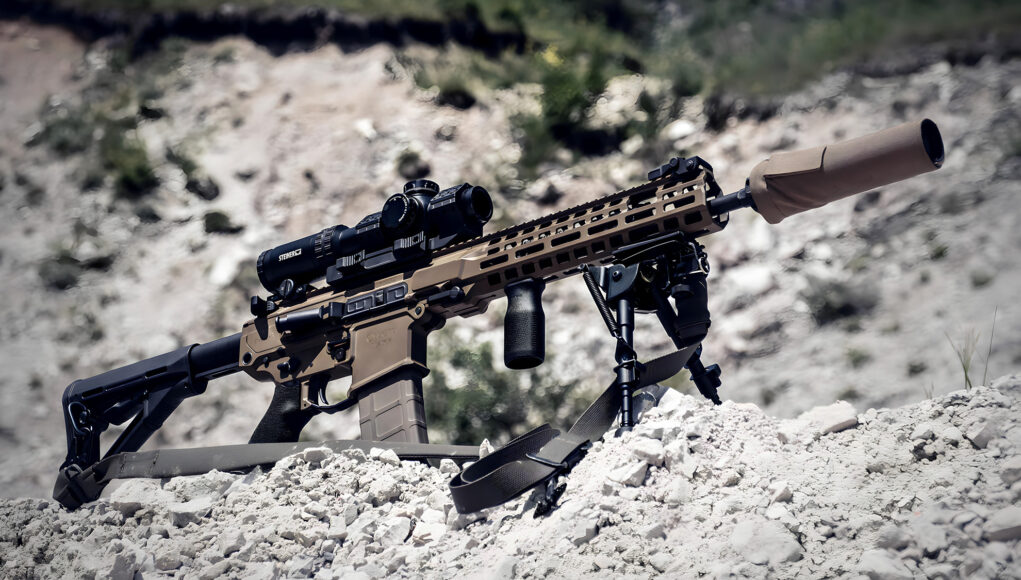


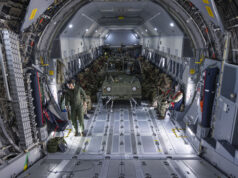



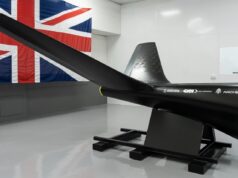


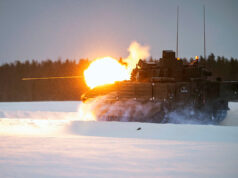

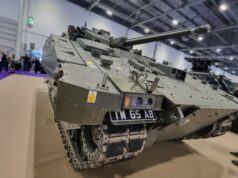

It’s pretty compelling, and the ability to manufacture with a 100% UK supply chain will be vital in the event that we need to expand rapidly our land forces (Which should be a key planning line for anyone serious about defence).
Difficult to see how this compares to, for example, the SIG or HK offer (which I assume is a variant of the 416)
The issue is it’s all short term. New rifles are ordered what every 40 years. Setting up a manufacturing facility to build a load over maybe 10 year, then what? Kinda need to go with an existing factory that is commercially viable unless we want to pay 10x the price to cover setting one up.
I would guess there is a natural wastage of rifles per year so yes production would massively slow down after the order is filled (don’t quite know why it would take 12 years to produce 170k rifles mind u) but barrels wear receivers need replacing I’m going to assume up grades at a certain point as well should keep a reduced factory going for quite some time plus maybe they could get other orders from other countrys as well
Building domestic capability comes at a cost, just a question of whether it’s worth it. My kinda feeling is if we can 100% build stuff locally or have the capability to do so if needed, then it’s worth it, but if the supply chain is international then it’s not really domestic and therefore questionable, if it means less money for other stuff.
The natural wastage of rifles per year is *tiny* for a batch of about 100,000 rifles. Not enough to sustain a factory unless, A) there is a huge government subsidy or B) there is other buisness to keep the factory afloat (which is how H&K can basically sustain it). We are unlikely to recieve orders from other countries because we are not setting up our own domestic design capability. Berretta is going to prioritise using it’s pre-existing Italian factories over keeping a UK facility running if it gets a rifle order.
It would take 12 years to produce that many rifles btw because of industrial strategy to mitigate exactly what we are talking about. Most military orders do not need to take as long to fill as they do, but companies try to balance speed of delivery against workforce size etc. That’s, again, why the A3’s are still rolling off the production line, because H&K are balancing filling the UK order against having to expand and shrink production capacity.
Or we have Government owned facilities like most major US facilities- oh that’s right we had those in the ROF factories but sold them off to Industry who asset stripped them immediately
Or we have Government owned facilities like most major US facilities- oh that’s right we had those in the ROF factories but sold them off to Industry who asset stripped them immediately – Of course once you destroy your R&D & Design base you have nothing to offer the world market other than ‘me too’
Then of course it’s all down to who can produce for the lowest cost… oh dear! We’re doomed as private Fraser would say! Government has zero strategy for a defence industrial plan. We will buy American and do what we are told like the nice compliant vassal we have become
@LB
Cool. So how much are you going to pay to keep a bunch of workers sitting on their hands not doing anything for 40 years? And do you think if they aren’t making anything they’re actually going to retain the skill set.
What may be an interesting compromise is to see how much of this can be automated and do just those bits, or perhaps adding some capability to Sheffield Forgemasters re-capitalisation to install barrel line to train apprentices.
Given the input of micro/additive manufacturing, robotics and AI it could be something forgemasters can accommodate to train apprentices, with the right QA in place.
Steve, I am sure they will hope for export orders as well as the big domestic one.
I’m sure they do, but the UK tax payer has to pay for the supply chain to be built first, so the UK tax payer doesn’t benefit
Is it too late for is to ask if they can remake the SLR?
Should the article end
What remains to be seen is whether the TREASURY and MoD recognises the opportunity, and the urgency, before it evaporates.
Sad state of affairs when the UK cant even design and produce its own rifles. That said, this will be a good test of the LIS – is it just more spin or is it actually a meaningful doctrine?
I am no specialist in small arms, so am not qualified to comment on whether this rifle is adequate to its role. I am sure there are many here that can! Note the word adequate rather than ‘gold plated’. The weapon needs to be adequate for its role nothing more.
In retrospect NATO should have adopted .280″ after the war rather then giving in to US parochialism which has lead to at least three calibres all of course based on US commercial rounds 7.62mm (overpowered) 5.56mm (Underpowered?) 6.8mm (overpowered? jamming/reliability issues?) Sounds like adoption of .280″ Intermediate round after WW2 would have saved NATO £ $ Billions in adopting 7.62 scrapping it for 5.56 and now being told 5.56 has insuffienct kinetic energy/range for the role. Particularly against modern body armour.
Appears the British Army are being led by the nose by the US to adopt 6.8 even given the obvious problems it has encountered.
Expert knowledge and opinions welcome!
I think you’re right. :thumbup:
5.56 isn’t in any way under powered. The main issue is that when you don’t have a full barrel length, the muzzle velocity isn’t sufficient to have the stopping power for which it was envisaged. So the move to an M4 style carbine was actually the issue – hence for all it’s short comings (which are actually ergonomic) the L85 actually has a very good stopping power and range-accuracy compare to an M4.
Of note, in the last 10 years, France, Germany and the USMC have chosen to remain with 5.56 (and all adopted versions of the HK 416). I think we’re a very long way from the death of 5.56.
The US Army is also a way of deciding to fully adopt the M7. From what I’ve seen and read, it’s not well suited to CQB and the ammunition weight is posing an issue for them – it may just need a change to TTPs and training from what they’ve been used to with 5.56 (ie very rapid fire to suppress the enemy). It’s notably different watching US infantry rate of fire compare to British Infantry firing at rapid rate.
NCO’s I am in contact with assure me that the latest SA80 is a a highly accurate ’good’ rifle – Apparently partly due to its bullpup design & barrel length. Whilst I understand it does have some negative features – handed etc. I guess replacement is due because of wear & tear? Existing stock worn out?
L85A3 is a decent rifle, especially if it’s what you learn on first and don’t have to “unlearn” the more common AR style controls. Some things aren’t terribly ergonomic (the selector switch for example is very awkward, but realistically is also not something you use very often), but most of the ergonomic issues come from people not used to using it. The righty only thing is an issue, but it’s not true that you can’t fire it from the off shoulder, it’s just awkward and if you get it wrong you get a face full of charging handle.
I used it for a couple years before moving on to other systems, and while there are other systems that are better now (lighter, more accurate, ambidexterous) nothing is so much of a game changer that I’d refuse a L85A3 if it was handed to me.
The rifles themselves are getting old, the A3’s have a lot of reworked parts on them, there’s no original A1 parts in them. But the upper recievers on the A3’s, came into service in the early 2010’s, and I believe the lowers are original A2 lowers, they are a little bit beat up, and you can sometimes feel them rattle where they are worn out. I think the A3’s probably have until the 2030’s in service life, and can probably cascade into support roles as Grayburn rifles come in for frontline troops well into that decade, but will need replacing at some point just from age.
Evening Dern, slight correction, as we’ve discussed before, the TMH is the only original A1 part, either RO Enfield or Nottingham manufactured.
The A3 receivers are ( I believe) still being delivered by HK, all the other parts are A2 and being delivered by HK as needed, bolt groups, piston assemblies etc, so, build some new TMH’s ( re- engraved with the master number) and its the proverbial triggered broom!
Whatever is selected through Grayburn, it must be 100% manufactured in the UK, thats for sure, abandoning small arms production in the UK was a massive mistake, that should now be rectified.
I’d honestly be surprised if any original TMH’s are still around, as per our last conversation, basically the entire system within the TMH was reconfigured in the A2 rebuild, old ones discarded, and as you said, new ones brought in. Maybe a few have survived, but I think the majority are A2 vintage.
NCO’s I am in contact with assure me that the latest SA80 is a a highly accurate ’good’ rifle – Apparently partly due to its bullpup design & barrel length. Whilst I understand it does have some negative features – handed etc. I guess replacement is due because of wear & tear? Existing stock worn out?
Bullpup rifles have better range for their size because they fit a longer barrel into a shorter overall weapon by placing the action behind the trigger. This increases muzzle velocity and accuracy without increasing the weapon’s length. However, the trade-off is reduced ergonomics and slower handling compared to conventional rifles. In close-quarters combat (CQB), these drawbacks become more pronounced — awkward reloads, poor weight balance, and limited shoulder-switching make bullpups less suited to dynamic movement and room-clearing, where AR-15-style rifles excel.
When discussing accuracy, it’s important to note that rifles like the M16, M4, and SA80 all fire the NATO-standard 5.56×45mm round. Their ballistic performance depends on barrel length. The M16A4 and the SA80 both have 20-inch barrels, allowing them to make full use of the 5.56mm round’s velocity and effective range. However, the SA80 is significantly shorter overall due to its bullpup layout, while the M16 retains more conventional ergonomics and easier handling.
The M4, in contrast, is a carbine-length version of the M16 with a 14.5-inch barrel, sacrificing range and velocity for improved maneuverability. This is why, during the Iraq and Afghanistan conflicts, you would see U.S. Army medics and support troops carrying newer M4 carbines, while frontline U.S. Marines continued using the older M16— a deliberate choice to retain better effective range.
Thank you JJ I note from this report that the US M7 has its issues too! https://acrobat.adobe.com/id/urn:aaid:sc:VA6C2:e76bd5ae-94cb-44c8-a56b-12669c5d2ca1
Slight correction JJ. There isn’t really a standard NATO 5.56 round. There is a standard size that means you can swap ammunition, but in reality there are different propellants, projectiles and casings. As an example, USMC I was with in Iraq were told to stop using our ammunition as it was wearing out their barrels – British 5.56 rounds use a much stronger propellant charge than the US equivalent. Ours is optimised for the L85.
The difference in muzzle volocity out of a 20inch barrel and a let’s say 16inch barrel is around about 300 ft per second it’s a difference but I wonder how that translates in energy on target and if it matters that much I think there is loads of life left in 223/5.56 I bet they can squeeze a bit more volocity out of it maybe trying what there doing with the 6.8 and have a bi metal case to increase the pressure, I don’t know but I don’t think 556 is going anywhere but that 6.8 mm round apparently can go through a level 4 plate at 800 m if so that’s a hell of a round
You’re absolutely right that different propellants impact pressure. When I mentioned the “NATO standard 5.56×45mm round,” I was referring to the physical dimensions of the round — in case Lord wasn’t aware that the three rifles are all 5.56.
Please can ENATO trial & adopt, 6mm ARC or 6.5mm Grendel or 6.5mm LICC. Any of those is better than 5.56mm .Great if the rifles can be built in the UK & keep the factory busy after that with pistols, SMG, LMG.
We are not going to go to a round with slightly better penetration and range when nato is standard on 556 the cost would be crazy to change for slightly better ballistics 6arc is a great round but it’s only offering about 20/30% better all round quality’s when in reality 556 does fine
Using that logic, the RAF would still be flying Dakotas.
As we don’t do air deployable forces now that might just work!!
On the cartridge question we should go with whatever is NATO standard, essentially the benefits of standardisation are constant and ever present, the benefits of armour penetration only happen if you hit a piece of intact armour.
Part of the reason the Americans are moving to 6.8 mm is more effective penetration of body armour at longer ranges, also there are extra costs associated with manufacturer of tungsten cored armour piercing rounds so not widely used.
Yes I’m aware, that’s what I’m commenting on.
But unless it becomes the standard in NATO the juice isn’t worth the squeeze, and even then it’s dubious.
So far the American experience with 6.8 has been running out of ammo early. Can this be mitigated by shooting less? yes. Will this mean a loss of fighting and staying power? highly likely. Are these negatives outweighed by penetrating an 18″ wide plate at 600m? I really doubt it.
Designing a Rifle is not easy, and unless you are willing to invest a *LOT* into building that capability you’ll struggle. Case in point, the SA80A1 series, whose problems where in no small part down to the UK not having made a rifle in a very long time and having lost the skills needed to take an okay design and translate it into a good rifle. It’s not something that is easy to reacquire. (Also worth noting that NATO had 7.62 as a standard infantry cartridge for most of it’s history, the move to 5.56 wasn’t completed until the 90’s. So it wasn’t just a short blip).
As for adequate for role, I’m sure it is. Berreta has a good history of making firearms and has been supplying the Italian Army for a while now, and it’s an AR-15/18 variant. They tend to have their kinks ironed out by now. The questions I have is, how will it stand up to your disgruntled squaddie chucking it at the end of a long day, how much will the unit cost be. It’s easy to make an amazing highly tuned marksman rifle these days, if you charge an arm and a leg for it, and if it’s machined to really fine tolerances that might not stand up to a beating.
Its interesting Dern, having studied the L85 programme in some considerable depth over the years and made several visits to the L85 wall at Warminster, its an abject study of nor to build a sevice rifle!
One of the key problems is the rifle was designed by committee, by engineering staff drafted into the project, from outside the firearms industry, the result was a predicable dogs dinner.
For example, the earlier trial X series rifles utilised an L1A1 type safety by the pistol grip, that worked well.
As the desig developed into pre production standard, it actually got much worse from a operators perspective and reliability had massively decreased.
When this shifted into production in 1985, it had got worse again, having been subject to a final set of cost cutting measures!
Its a sad story….
If you tell staff the factory is being closed down and moved the best people will leave first and quality will suffer, use of stampings to save machining costs and cheaper materials took their toll. Believe Rovers expertise was sought to improve stamped part quality.
Using stamped steel for the construction of a rifle you are going to produce 300,000 of for a small professional armed forces always was a strange thing to do in my opinion.
After all, your not banging out millions of AK’s as cheaply as possible!
It’s one of the reasons I really liked the HK416 I used in Afghan. Being embedded with the Canadians who used the Demarco/Colt C7/8. We had a major incident due to the 5.56 ammo we were provided. This batch came from Rumania. It fired very dirtily, which left an heavy oily residue. After prolonged firing, the C7/8’s would start to misfeed rounds. As the gas tube was getting gummed up. The working parts were also affected by the residue. The HK has an adjustable gas plug, like the L85, where you can select a larger hole. Thus allowing the weapon to keep firing without misdeeds.
Don’t get me wrong, the HK still needed a thorough clean. But it was more accepting of crap ammo. Unlike the direct impingement C7/8s. Once the Rumanian ammo was quarantined and replaced with UK manufactured ammo, there were no further problems.
I guess my point is that until you start sending rounds down range. You won’t know the quality of the ammo. Having a weapon system with a short stroke piston allows more flexibility and reliability when faced with dodgy ammo. Which in my book outweighs the weight advantage of direct impingement systems.
I think to be fair; the SA80 issue were caused by the sale of ROF to BAE with the production contract for the rifle part of the deal. Having seen the drawings of the rifle at the time I can confirm they were not sealed and really were in no way ready for series production- but it went ahead anyway. With predictable results. I actually spoke to man involved in ROF who said the rifle needed eighteen months to two years final testing design reviews before it was made.
Lord M, we adopt SA with NATO-standard calibres. We don’t slavishly follow diktat from the US in weapons procurement.
There’s nothing wrong with the 5.56mm as long as it’s used correctly IE it’s fired from a 20 inch barrel, moving away from a bullpup design is a big step backwards in my opinion. While I’m not fussed on the controls of the SA80 it is a solid all round fighting rifle and there are some very good more ergonomic bullpup’s on the market right now.
It now looks as if 6mm Arc is the optimal round, do not be surprised if US moves away from 6.8mm and adopts it, for general infantry it does seem to be the sweet spot, especially with the more powerful hybrid nickel/polymer bullets available
UK will almost certainly go 5.56 and that is fine if we use above rounds, as they are 10% more powerful in most cases.
But the 6mm arc is a massive improvement in lethality and range over 5.56mm and can offer 6.5mm performance in a more compact bullet. There is a lot going for it, just not logistics at this point in time.
Having a sovereign barrel /upper capability would allow us to start with 5.56mm for first 50-100k units then move to Arc/other for the remaining orders + upgrades of originals if required.
Will be interesting to see what project Grayburn specifies as the calibre
Should be a strategic necessity if we are on “war footing”. We need the ability to mass produce millions should the need arise, with distributed production sites should the main factory be targeted.
Voluntary firearms courses that citizens could sign up for to build war resilience. The more men and women who have weapon skills the safer we would be.
You would like to think the Army, MoD, HMG, Treasury would have a minimum acceptable industrial strategy plan that ALL bidders would have to meet i.e. barrel forging, upper/lower receivers, sighting systems etc.
Sadly a lifetimes involvement with aforementioned bodies would only reinforce the fact there will be no strategy and jobs for the boys and the old boy network will triumph. At the expense of UK sovereign capability and balance of payments as normal.
Has to be the 100% option for whatever new rifle we adopt. Any price premium more than offset by increased tax revenue – not something the big brains at the Treasury seem to understand, unfortunately.
You’d better have done us proud George—and landed a tighter grouping than Forces News!
On a serious note—how many NDs are we talking about?
What MOD need to do is invite George to all the Trials, let him have a go and see which he prefers or gets his highest score with. It’s a win win, George gets to learn to shoot and have “Fun” and MOD know it’s been proof tested by a Newbie.
I know sod all about guns but surely they must be reaching a point where they’re almost perfect?
They’ve been in production for a century and constantly upgraded and still do the same basic job with a few extra bells and whistles.
Is it possible that huge leaps are still achieveable?
Is it just upgrades for scopes and stuff?
Yeah more or less a solved technology at this point, aside from changes in material (plastic, carbon fibre, etc), niche and novel tradeoffs/gimmicks (Kriss Vector), and of course the unobtainable holy grail of caseless ammunition if we ever figure that out.
We had caseless ammunition in the 13c 😂
I hope they don’t go for perfect and spend more than necessary.
Isn’t “good enough” acceptable for an IW to kill someone?
And what’s wrong with the SA80? Age?
Like Bob says above, it’s all about ergonomics. That’s why whatever we choose, it’s going to be an AR-style rifle rather than a bullpup — faster, more intuitive reloads, better balance, greater modularity, and easier handling overall.
The AR-15 design is incredibly mature, with a huge ecosystem of proven options. Like you said — we just need one at a reasonable price, which ‘should’ be simple.
Age. It’s age. The A3’s have a lot of rebuild in them, but the upper receivers where a single part replacement on the A2’s over a decade ago (yes H&K designed a new receiver, stamped it A3, and then sold them to the army to be fitted to A2’s, so if you look at a lot of A2 rifles they have “A3” stamped on the receiver). There servicable, they’re not broken, but you can tell they’re a bit rattly and getting on even with the rebuild. I suspect if you fast forward to 2035 when I’d guess the last A3’s will finally filter out of the most REMFy units, they’ll really be showing their age.
Ergonomics are often cited, but IMO that’s a target shooters complaint (or in some extreme circumstances an airsoft shooters complaint). The fact is most squaddies don’t get slick enough at reloading for the rifle to be the real difference (a lot of the flicking the magazine stuff to the side you see is great range stuff, but not something you’d really be doing as you want to keep your magazine. Instead a reload is done a bit more deliberately in cover or while on the move, and I’d argue that the change from the old PLCE ammo pouches to velcro ones probably sped up reloads way more than any rifle change ever will).
Thanks Dern.
Basically mate, the A3 is triggers broom, only tbe TMH ( lower receiver) is original to the A1.
That said, its been in service for 340 years this year ( initial A1 deliveries in 1985) and its time to move on.
The AR platform lends itself to very easy barrel swaps, (unit armourer level) and is therefore capable of being reconfigured for 11.5″ barrel to 20″ for different tasks with ease.
It can therefore easily be rechambered in any of the 5.56mm derived calibers, or for that matter, any calibre that will fit the magazine well.
It will be an AR type, thats for sure..
40 years even!!!
I addressed the ship of Theseus above, the rifles are still old, and they are aging. Even the A3 upper receivers are a decade into their lives. As I said, they’re still serviceable, but it’s hard to find an L85, even an A3 that isn’t showing tell tale signs of a long life. In 10 years they’ll definitely be wanting to bow out (or we just give in and completely new build L85’s, but I don’t see that happening).
Evening Dern, the only reason they haven’t authorised new TMH’s ( yet), is that they have the S/N on them.
To be fair, the scrapping of the L86A2 provides plenty of TMH’s that could be easily adapted, if needed.
Re the A3 receivers, (original pattern and full picatinny rail) and A2 parts, they were being manufactured in quantity by HK until recently for the ongoing retrofit programme along with replacement barrels etc.
It makes a great deal of sense to refurbish 10s of thousands of A3’s as war reserve stock in the situation we find ourselves today.
We did precisely this with the L1A1, 50,000 rifles with remaining receiver life, judged by locking shoulder size, went through Parker Hale FTR, with new PH barrels and gas blocks, refurbished TMH’S, new cocking handles, furniture etc. These were sent to store as war reserve in the late 1980’s before being disposed of to the trade and friendly countries.
Having examined a good number of these over the years, I can confirm these old warhorse were restored to close to factory fresh condition.
Considering we actually manufactured all the pressure baring parts of the A3 until recently, there is no reason we shouldn’t refubish a good number for back up.
Okay but now we are rather shifting the goal posts from “Needing to be replaced as a general service rifle in the next decade or so” to “Should be gotten rid off entirely.” Which was never the argument.
Morning Dern, Grayburn does suddenly have to have a fire under it doesn’t it.
I would think there are more pressing requirements to be honest, the A3 rebuilds keep it relevant, especially considering the teeth elements are being equipped with various AR variants anyway.
I had a good look at a L403A1 the last time I was at Warminster, its an extremely impressive piece
of kit, but ‘bloody’ expensive!
I would hope there is a proper competition, testing the candidates to destruction and ensuring that 100% UK production and support is factored in to the cost.
I would like to see the Bren3 considered too, with a few small tweaks, its looking like a very capable rifle.
In fairness the L403 is really only Rangers and Commando’s, everyone else in the teeth arms is staying on L85 until Grayburn reports. I really like the L403, but they really need to sort out the blanks for it. Ah well, can’t have everything apparently.
But yes, the change from L85 to an affordable general service rifle I don’t think will see any dramatic uplift in capability. So a thorough testing process and an understanding that we should get another decade out of the A3’s is key to me.
As for what replaces it, the main thing is IMO that it’s affordable. Bren, Berretta, HK, none of these will produce a bad rifle. It’s questions like what will break the bank that we won’t get eyes on as memebers of the “public” that will make the decision. Personally I’m not too fussed if we make the rifle here or not, I don’t see us sustaining an AR production line in the UK just for our Armed Forces. A nice to have but it’ll be a devil of a job to make sure it doesn’t shut down after Grayburn has delivered and we wait another 50 years for the next service rifle.
Thanks mate.
If we change calibre, we face the problems of ammunition supply and operating two calibres for a lengthy period. If we stick to 5.56 mm, a new rifle can be phased in over time whilst keeping replaced SA 80s in reserve.
No idea how good the Beretta rifle is, but the idea of recovering a sovereign capability is very attractive.
I mean that’s not such a huge burden. For starters at section level we already provide 3 different forms of ammunition. 5.56 for IW’s, 7.62 Link for GPMG, and 7.62 for Sharpshooter (and if Glocks are carried it’s also 9mm). What would in practice happen is a stock of the new rifle would be built up until an entire Battalion could be equipped with it and then the transition made.
Is it not though the possibility of the British army winding up with a useless rifle unless other calibres of ammo are considered? The 5.56 is of little use at extended ranges across open fields or if required to penetrate a basic level of body armour.
Beretta seem to have very firmly looked to capitalise on the prevailing winds of sovereign capability! Certainly putting a good marker in the sand for the others to be chasing. My only concern is, once production is wrapped up with the 170k guns, what will happen to that manufacturing facility…
As far as potential calibre change, I really don’t see anyone adopting the 6.8 x 51 mm Sig that the US Army are trialling. It’s essentially the same size as 7.62 NATO, although apparently lighter. The performance is clearly for better range and armour penetration, but I’m not seeing either of those things playing a part in any future fight with Russia. Engagement ranges in eastern Europe are the same as they were in WW2, as sight lines haven’t changed; the Russian army is certainly not issuing body armour to hardly anyone- even fewer get stuff with real ballistic plates. A new calibre/cartridge is likely, I just don’t think it’s that.
As far as the Beretta offerings go, I’m not an expert- although I like to shoot. In my view, with our partnerships in the far north, etc. the Sako option seems a winner. But everyone does seem to like the AR ergonomics (including myself, to be fair, having fired some examples), and that many people can’t be wrong…!
Beretta is one of oldest industrial companies in the world, founded in 1526… They proudly display some documents of archebus tubes they sold to the Republic of Venice in XVI Century
Feels like its the wrong time for this. There is a lot of concern around the 5.56mm and it would appear another option is needed, but there appears to be a lot of negativity towards the new US rifle especially around the lower number of rounds carried. We could do with letting the US iron the matter out first, see if they stick or twist.
Look up 6mm ARC. It had been “adopted” in small numbers by the US SF community, before it was even announced to the public.
The issue is then your going alone, and don’t benefit from NATO stocks.
Seems odd that NATO itself isn’t looking into this. Although as usual the US has done what is good for itself and stuff the rest, so maybe why
European NATO countries should have a trial of 5.56 vs 6mm ARC vs 6.5 Grendel vs 6.5 LICC . All should adopt the winner over time.
At some point i might spend some time reading up how 5.56 came about and how it became the standard. Considering how NATO works and nothing else being truely standard, it is an oddity.
The late 1950s USAF wanted to replace .30 M1 carbines for their guards on SAC bases. Something with a bit more range , but not as heavy as the 7.62×51 M14. The 222 Remington (5.56×43) had been launched a few years earlier & had become popular with varmint & short range target shooters. USAF wanted something slightly more powerful, so the case was stretched 2mm & the 223/5.56×45 was born. The original sin was not to adopt the third version, stretched by another 2mm, the 222 Remington magnum (5.56×47). The 5.56×47 with a 70 grain bullet would have partly solved the problems of 5.56×45 with a 55 grain bullet.
6 mm or 6.2mm is a good compromise and has a flatter trajectory, doubtful if it would be considered if Americans have gone with 6.8 mm.
You will find 3 camps in the US military. The first camp says stick with 5.56. The second camp says that they do not want to be outranged by 7.62x54R Russian round, so they went to the extreme of 6.8 Sig magnum that gets 3000 fps out of a short 11 inch barrel. Pressure is fierce to say the least. Then there is a third compromise camp that wants something in between. They advocate for 6mm ARC or 6.5 Grendel or 6.5 LICC.
I’m sure HMG and the MOD will mess this up and pass on what should probably be the winning tender.
In general I support paying a bit more for domestic production and supply of spares of military equipment, but I’m not really sure it’s worth it for small arms. They are arguably the least important weapon on the modern battlefield and very close to “commodity” pricing internationally. In a genuinely forward-thinking army how many men in the infantry are actually going to be well-trained marksmen shooting human targets at hundreds of yards, and how many are going to be carrying bags of small drones, or anti-drone weapons like shotguns, net-guns, and lasers? Rifles will of course still be issued, but I suspect more compact, and possibly smaller-calibre weapons designed to spray suppressive fire and clear trenches and buildings will be the order of the day. I would much rather the Army spent it’s limited funds on UAV and C-UAV systems, and got it’s comms and EW in order, before spending money on a gucci new rifle and expensively setting up domestic production facilities .
Hi Finney, I get your points, do we need to arm our infantry with ranged weapons at all, if they carry a number of small FPV type drones? The answer is yes obviously, as the supply of drones is even more dependent on the logistical tail, then small arms and ammo are. Especially when it comes to where the precious metals come from for the electrical motors. Drones are yet another burden that the infanteer must overcome, much like mortars and machineguns were in the past. We are already seeing deliveries to our troops of the new Smash Smartshooter digital sight. Designed to help the shooter lock on and track small drones, where the digital reticule shows a predicted shot intercept aim point. Within our Forces small arms, it can be fitted to the L85, L129, L7 GPMG, L111 M2, L400 and the C8s.
The sight does demand accuracy, so a carbine or short barrelled weapon system like a personal defence weapon (PDW) is not really adequate. As the sight can predict a first round hit (greater than 80%) at 100m. Smash, have said that the M4 with its 14.5″ barrel is compatible with the sight. However a M4 in general has a minute of angle (MOA) of between 4 and 5. Whereas the AR15 with a 20″ barrel has a MOA of between 2 and 4. This means for a M4, a shot at 100m will fall within a 4″ or 5″ circle. Whereas, the AR15’s is 2″ to 4″. So with the M4 there’s is a greater chance that the rounds will miss, especially for small targets like a FPV drone. The Smash sight can give intercepts out past 300m, so a weapon that has a smaller MOA is highly beneficial, as it means you can engage the target further away, with more confidence of achieving a hit (even if you are not a sharpshooter).
There will always be a need to close with and take out the enemy. But my experience of fighting in Iraq and Afghan showed that the engagement when not planned on our part and purely reactive could be anything from 10m to 800m. Where at 800m it was on the receiving end of purely harassing fire, normally from a PKM. Whereas the very short range engagements could be walking round a corner of a building and coming upon the enemy walking out of a house. As Mike Tyson said: “Everyone has a plan until they get punched in the mouth.” Which is much the same as a plan only lasts up to the first contact, in Army speak. IF you are involved with close quarters battle (CQB), i.e building clearing, a smaller carbine like a M4 is ideal. However, Army in general do more that, where they have to do planned engagement missions, such as an ambush or move to contact. Which is where you need a weapon that has a longer effective range like for example a AR15. There are always trade-offs and compromises, which you live with and adapt for.